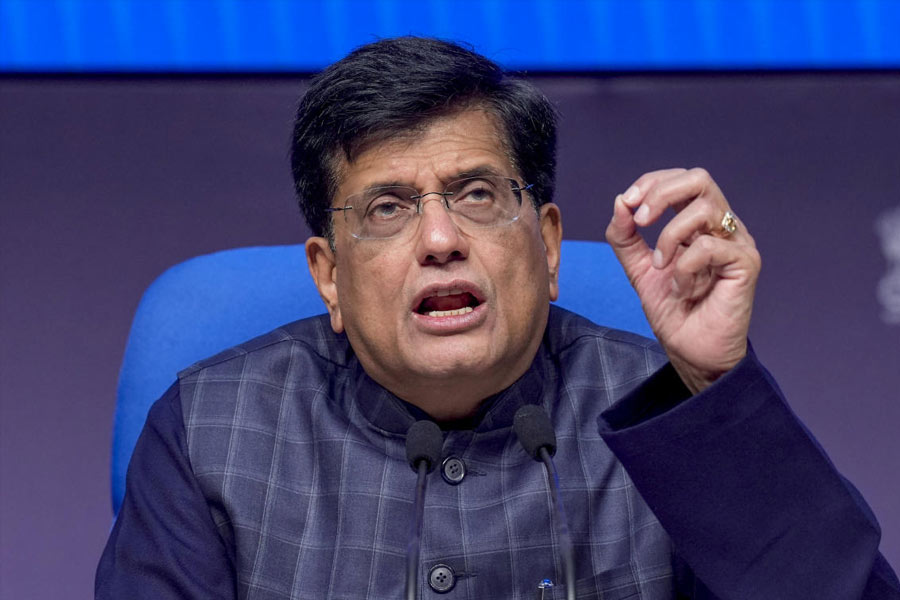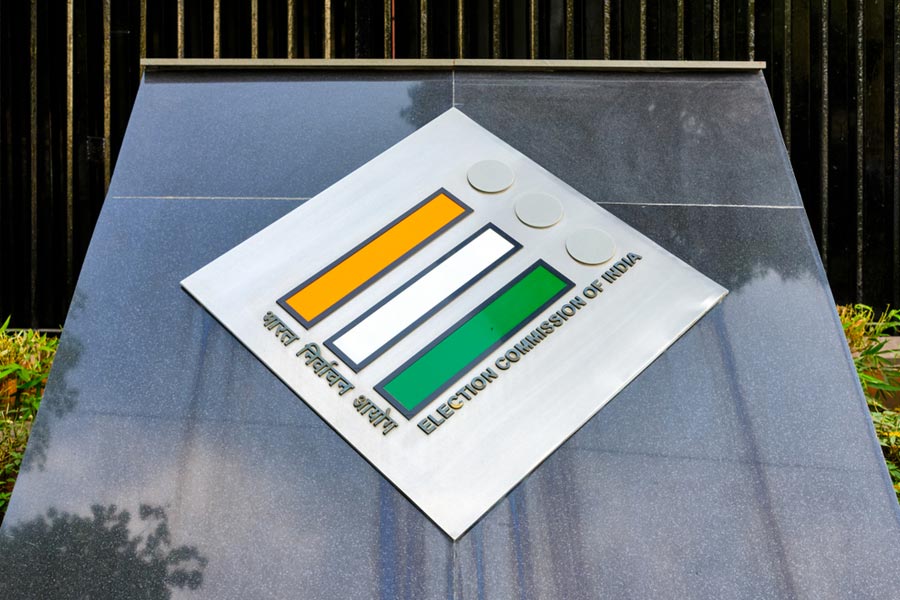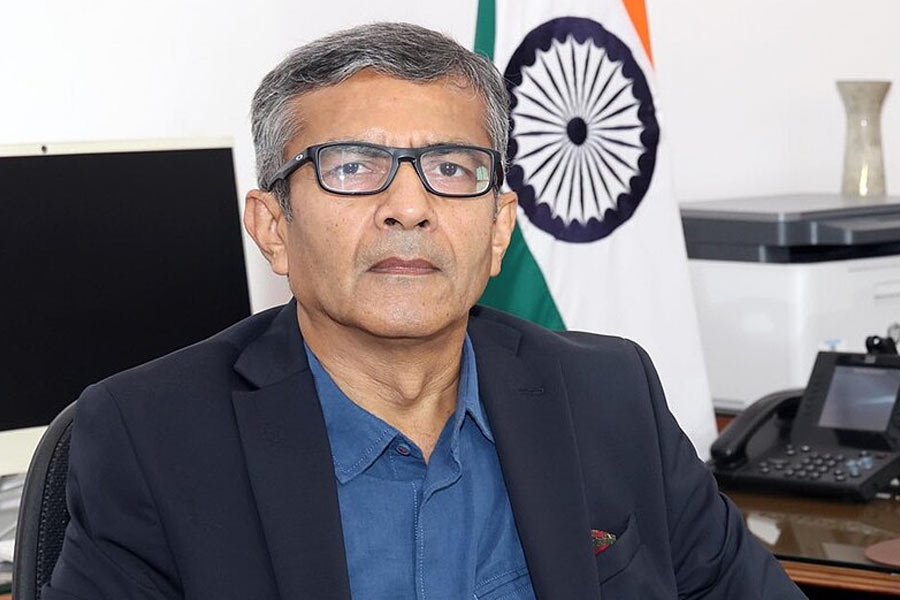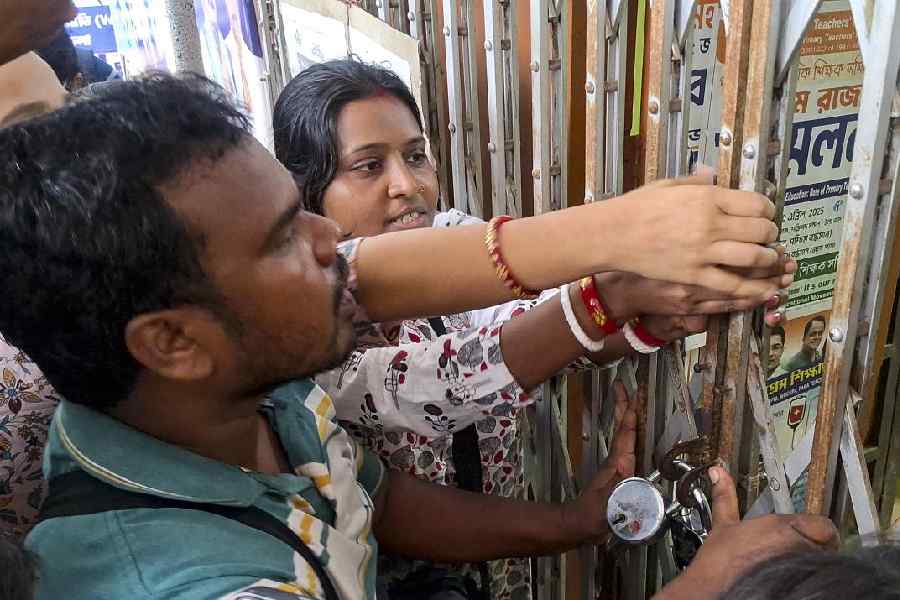 |
| Ramachandra Guha holds forth on the idea of India and the enemies of the idea. (Sayantan Ghosh) |
“We hate the communists; of course they should go when the results come out on May 13. But six months on, for all you know, you may start missing the communists!” smiled historian-author-political commentator Ramachandra Guha, a mischievous glint in his eyes. The occasion was the founders’ day of the Bharatiya Bhasha Parishad on May 1 and the topic of discussion “The idea of India and the enemies of that idea”.
Packing in humour and history with ease, Guha listed the CPI’s rejection of Independence in 1948 and the resolve to bring about a one-party communist system like in Russia as one of the enemies of the idea of a multi-cultural India.
“So, 34 years of uninterrupted communist rule in Bengal… would you call that an enemy of the idea of India as well?” Metro wanted to know of the author of India after Gandhi.
His reply was greeted with smiles and nods in the audience.
The evening, however, hadn’t started on such a light note. Just as Guha was about to take the podium, a lone moustachioed voice rose in protest because Guha would speak in English at an organisation that had been set up in 1974 to promote Hindi, among other ideals.
“I have sometimes run into controversy after delivering a talk. But this is a new experience…. I seem to have courted controversy even before I’ve spoken a word!” chuckled The Telegraph columnist.
But as Guha’s talk unfolded, one realised one couldn’t have hoped for a better start to the evening. For, in this insistence on a particular language lies the crux of how the very idea of India as a nation is a miracle.
“The extraordinary thing about India is that it exists,” said Guha. And going by the historical (mainly European) concept of nationhood — a common language, a common religion and a common enemy — one can easily understand how the idea of India is “different from every other form of national identity”.
The term “the idea of India” was first used by Rabindranath Tagore, in a letter to his friend CF Andrews: “The idea of India is against the intense consciousness of the separateness of one’s people from others, which inevitably leads to ceaseless conflicts”, Guha quoted.
So what are the enemies of this idea?
According to Guha, the first enemy is the insistence that India become “a Hindu Pakistan — Hindi-Hindu-Hindustan”. The second is the desire for communist totalitarianism and the third the argument that India is bound to break up under the weight of its own internal conflicts and ethnic separatism.
Stringing anecdotes ranging from the refusal of the Nizam of Hyderabad to join the Union of India to the haughty dismissal of the longevity of the nation by Naga rebel leader Muivah, Guha showed how India had survived and flourished despite the many odds.
But 64 years on, we have some new enemies too, added in the last decade or so — inequality, corruption and environmental degradation.
And the cure to these maladies? “I’m a historian, I can only analyse,” admitted Guha, but pointed out that the modern polity is like a three-legged stool, the state, private enterprise and civil society making up its three legs. If any of the legs falls short, the tripod would become wobbly.
A hint of how the idea of India survives was provided by the endnote by The Telegraph’s Rudrangshu Mukherjee, the chief guest for the evening.
“The idea of India survives because there are people firmly committed to the idea of India. A boy with roots in Karnataka grew up in the hills of Dehradun, moved to the capital to study in the most prestigious college and then at the most distinguished institution that teaches economics and sociology. He isn’t that interested in studies, he’s more into cricket.
“But somewhere, the love for the environment pulls him. He comes to Calcutta, his head throbbing with Marxist ideas and goes to the Indian Institute of Management, Calcutta, to do a PhD on environment. Today, he travels globally but his commitment to the idea of India continues.
“His name is Ramachandra Guha.”










